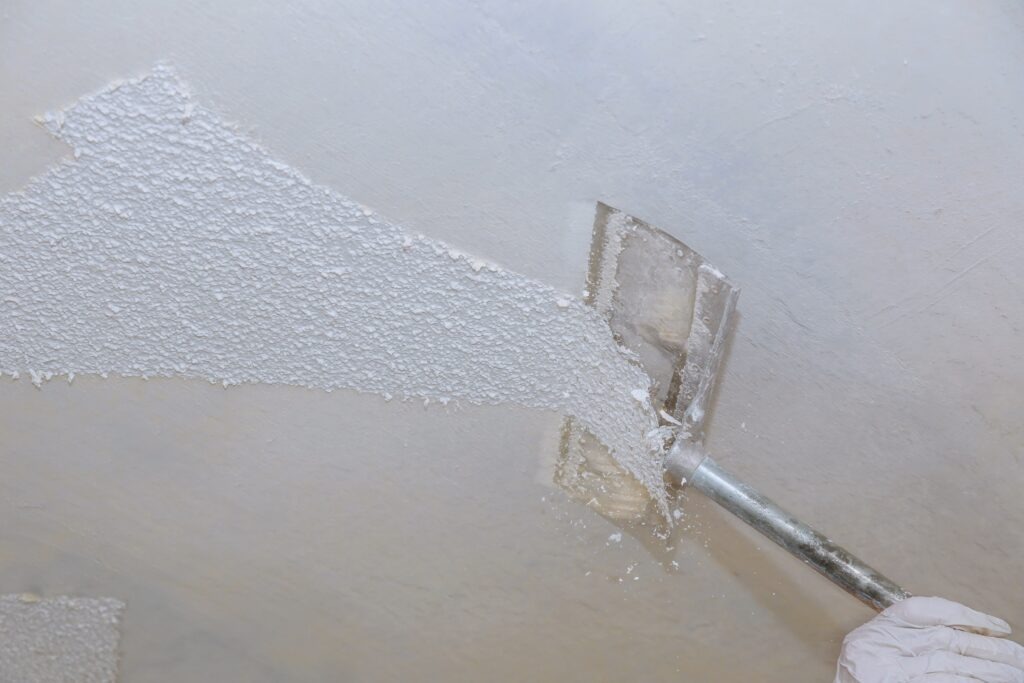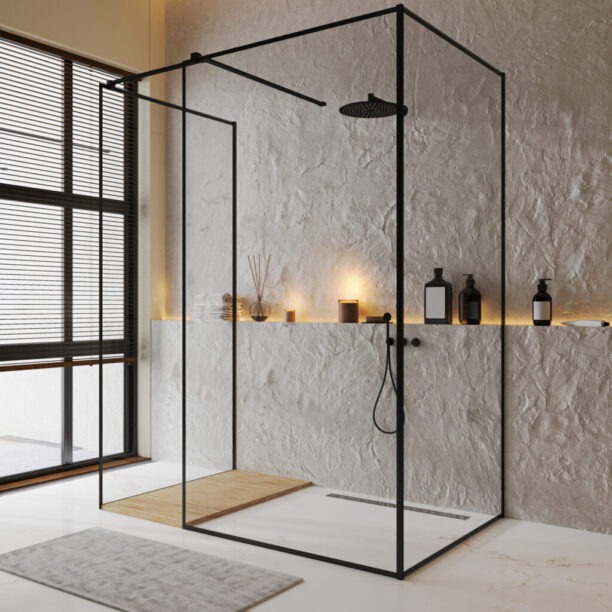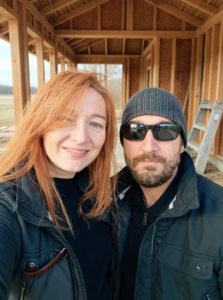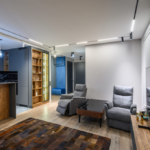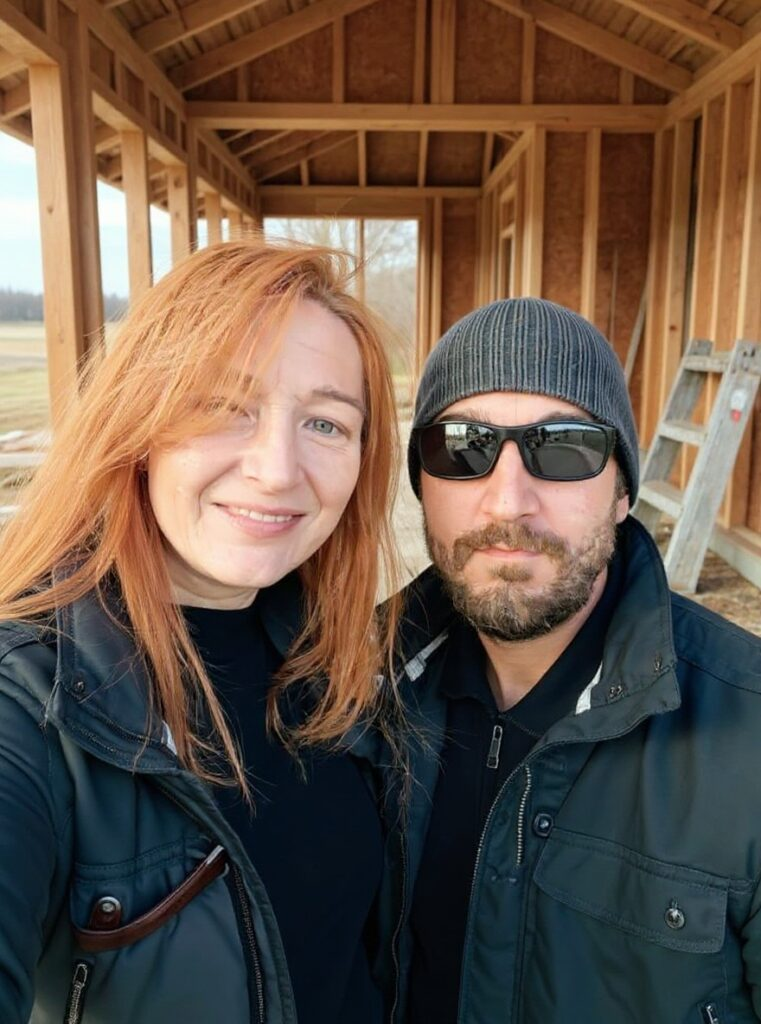Table of contents
The Painful Patch: Why Popcorn Ceiling Repair is a Homeowner’s Headache
Popcorn ceilings, that heavily textured finish popular from the 1950s to the 1980s, were originally valued for their ability to hide imperfections and absorb sound. Today, however, when they suffer damage from a leak, a scratch, or a clumsy furniture move, they become the bane of a DIYer’s existence.
While the repair itself—patching the underlying drywall—is straightforward, the true difficulty of fixing a popcorn ceiling lies in one frustrating, near-impossible task: seamless texture matching.
1. The Custom Texture Problem
Popcorn texture is not a uniform product. Its appearance is a result of several variables that are almost impossible to perfectly replicate decades later:
- Particle Size: Popcorn ceiling texture material consists of white polystyrene or vermiculite particles mixed into a binder. The size, shape, and density of these particles vary significantly by brand and year of application (fine, medium, or coarse). Modern repair mixes often don’t contain the same exact components as the original.
- Application Method: Was the original material sprayed on with a large industrial hopper gun? If so, what was the air pressure setting? Was it applied with a dense paint roller? Each method creates a unique look. Trying to replicate a specialized spray pattern with a small aerosol can or a brush-on patch is often futile.
- Age and Wear: Over time, the original texture has aged, possibly been painted multiple times, and collected dust. This changes its color, luster, and even the way the peaks and valleys catch the light. A fresh, bright white patch of new texture will inevitably stand out against the faded, aged material around it.
2. The Blending Conundrum
Even if you find a product with a particle size that is close to the original, the transition between the old and new areas rarely disappears:
- The Hard Edge: When applying the new texture, you have to find a way to seamlessly “feather” or blend the patch into the surrounding, existing texture without a visible line. This requires a delicate touch and perfect timing. If you apply the new texture too thick, or create a hard line where the old and new meet, the repair will appear as a noticeable “hump” or patch.
- Controlling the Density: The density of the new texture must perfectly match the old. If the existing popcorn has sparse coverage, and your patch is heavy and thick, it will be instantly obvious. Achieving that specific density with an imprecise application tool requires significant practice.
3. The Required Sacrifice: Scrape and Re-Texture
For a repair to truly be invisible, most professionals recommend a more drastic, messy approach:
- Prep the Patch: After patching the underlying drywall and smoothing it out with joint compound, you must extend the repaired area.
- Scrape the Border: Carefully scrape away the existing popcorn texture in a large border (e.g., 6 to 12 inches) around the new drywall patch. This creates a smooth “blending zone.”
- Re-Texture the Area: Apply the new texture (usually with a hopper gun for best results) over the patch and gradually fade it into the existing, untouched texture outside the scraped border.
- Paint the Entire Ceiling: After all the texture work is done, the entire ceiling must be primed and repainted. This unifies the color and finish, which is the final step in concealing the repair.
In the end, what starts as a simple, small repair can quickly escalate into a full-day (or weekend) project involving scraping, texturing, drying, and painting a large portion of the ceiling—all because of the challenging nature of the popcorn finish. For many homeowners, the time, mess, and unpredictable results of patching often make total removal the more appealing, long-term solution.
Key Takeaways
- Popcorn ceiling repair poses a significant challenge for homeowners due to seamless texture matching.
- The custom texture problem arises from particle size, application methods, and aging effects that vary by brand and year.
- Blending new texture with old often results in hard edges and density mismatches that are hard to conceal.
- Professionals recommend scraping the border and re-texturing the entire area for a uniform appearance.
- Behind simple repairs lies a messy, lengthy process that may lead many to consider complete removal instead.
Estimated reading time: 4 minutes
